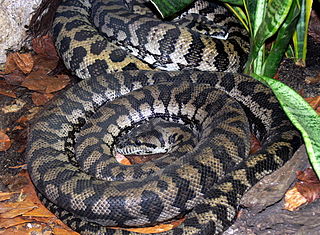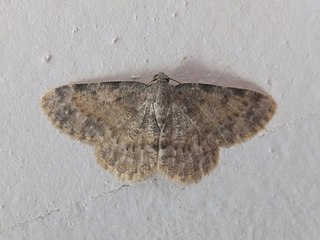
Bauhinia × blakeana, commonly called the Hong Kong Orchid Tree, is a legume tree of the genus Bauhinia, with large thick leaves and striking purplish red flowers. The fragrant, orchid-like flowers are usually 10 to 15 centimetres across, and bloom from early November to the end of March. Although now cultivated in many areas, it originated in Hong Kong in 1880 and apparently all of the cultivated trees derive from one cultivated at the Hong Kong Botanical Gardens and widely planted in Hong Kong starting in 1914. It is referred to as bauhinia in non-scientific literature though this is the name of the genus. It is sometimes called the Hong Kong orchid (香港蘭). In Hong Kong, it is most commonly referred to by its Chinese name of "洋紫荊". Also see "Kanchan Flower"(Bengali) for reference.

Erythrina variegata is a species of Erythrina native to the tropical and subtropical regions of eastern Africa, the Indian Subcontinent, northern Australia, and the islands of the Indian Ocean and the western Pacific Ocean east to Fiji.

The Field Elm cultivar Ulmus minor 'Atinia Variegata', the Variegated-leaved common English Elm, formerly known as U. procera 'Argenteo-Variegata' and described by Weston (1770) as U. campestris argenteo-variegata, is believed to have originated in England in the seventeenth century and to have been cultivated since the eighteenth. The Oxford botanist Robert Plot mentioned in a 1677 Flora a variegated elm in Dorset, where English Elm is the common field elm. Elwes and Henry (1913) had no doubt that the cultivar was of English origin, "as it agrees with the English Elm in all its essential characters". At the Dominion Arboretum, Ottawa, the tree was listed as U. procera 'Marginata', as the variegation is sometimes most obvious on leaf-margins.
The Wych Elm cultivar Ulmus glabra 'Albo-Variegata' was first mentioned by Weston in 1770 as U. glabra var. variegata. An U. campestris latifolia albo-variegataHort. was distributed by the Späth nursery, Berlin, from the 1890s to the 1930s.
The Wych elm cultivar Ulmus glabra 'Latifolia Aureo-Variegata' was first mentioned by Neubert in Deutsches Magazin für Garten- und Blumenkunde 1871 as Ulmus campestrisL.latifolia aureo-variegata.
The European White Elm cultivar Ulmus laevis 'Aureovariegata' was mentioned in 1903 as U. effusa f. aureovariegata, but without description. An U. effusa variegata was grown at the Munich Botanic Garden in 1829.

The Field Elm cultivar Ulmus minor 'Argenteo-Variegata' or simply 'Variegata', known in Australasia and North America as Silver Elm or Tartan Elm, is said to have been cultivated in France from 1772. Green noted that variegated forms of Field Elm "arise frequently, and several clones may have been known under this name". Dumont de Courset (1802) listed an U. campestris var. glabra variegata, Loudon (1838) an U. nitens var. variegata, and Wesmael (1863) an U. campestris var. nuda microphylla variegata.
The hybrid elm cultivar Ulmus × hollandica 'Eleganto-Variegata' is one of a number of cultivars arising from the crossing of the Wych Elm U. glabra with a variety of Field Elm U. minor. It was first mentioned by Miller in The Gardeners Dictionary (1735), as U. major Hollandica, angustis & magis acuminatis sammaris, folio latissimo scabro, eleganter variegato.

The Field Elm cultivar Ulmus minor 'Viminalis Pulverulenta' (:'powdery'), also known as 'Viminalis Variegata', a variegated form of U. minor 'Viminalis', was first mentioned by Dieck, in 1885 as U. scabra viminalis pulverulentaHort., but without description. Nursery, arboretum, and herbarium specimens confirm that this cultivar was sometimes regarded as synonymous with U. minor 'Viminalis Marginata', first listed in 1864, which is variegated mostly on the leaf margin. It is likely, however, that 'Pulverulenta' was the U. 'Viminalis Variegata', Variegated Twiggy-branched elm, that was listed and described by John Frederick Wood, F.H.S., in The Midland Florist and Suburban Horticulturist 1847 and 1851, pre-dating both Kirchner and Dieck. Wood did not specify the nature of the variegation.
The Wych Elm cultivar Ulmus glabra 'Pendula Variegata' was first described in 1850, and later by J. F. Wood in The Midland Florist and Suburban Horticulturist (1851) as U. montana pendula variegata, the 'broad-leaved variegated weeping mountain elm', and was said by him to have originated in and been distributed by the Pontey nursery of Kirkheaton, Huddersfield, Yorkshire. It was listed by Hartwig & Rümpler in Illustrirtes Gehölzbuch (1875) as Ulmus montana (:glabra) var. pendula variegataHort.
The elm cultivar Ulmus 'Variegata Nova' was first listed by Nicholson in Kew Hand-List Trees and Shrubs, 2: 137, 1896, as Ulmus campestris var. variegata nova, but without description. The tree was considered "possibly U. carpinifolia" (:minor) by Green
The variegated butterfly bat is a species of vesper bat. It is sometimes also called the leaf-winged bat, or simply the butterfly bat. It is not currently endangered, but may be threatened by habitat loss in some parts of its range.

Morelia spilota variegata, commonly known as a Carpet Python, is a subspecies of python found in New Guinea and Australia, smaller than the nominate subspecies Morelia spilota spilota and has a more restricted geographic range.

The black-and-white ruffed lemur is an endangered species of ruffed lemur, one of two which are endemic to the island of Madagascar. Despite having a larger range than the red ruffed lemur, it has a much smaller population that is spread out, living in lower population densities and reproductively isolated. It also has less coverage and protection in large national parks than the red ruffed lemur. Three subspecies of black-and-white ruffed lemur have been recognized since the red ruffed lemur was elevated to species status in 2001.

Charissa variegata, the etched taupe, is a moth of the family Geometridae. It was described by Philogène Auguste Joseph Duponchel in 1830. It is found in France, the Iberian Peninsula, Switzerland, Austria, Italy, the Balkan Peninsula and Ukraine.

Iris variegata is a species in the genus Iris, also in the subgenus Iris. It is a rhizomatous perennial from eastern Europe. It has dark green, ribbed leaves. The branched flowering stems can be as tall as the leaves, they can hold 2–3 flowers in summer. They are yellowish-white, with brown-purple veins on the drooping falls. It is very hardy and it is commonly cultivated as an ornamental plant in temperate regions. There are several cultivars.
Compsosomatini is a tribe of longhorn beetles of the Lamiinae subfamily.
Desmiphoropsis is a genus of longhorn beetles of the subfamily Lamiinae.
The Field Elm cultivar Ulmus minor 'Cucullata Variegata', a variegated form of U. minor 'Cucullata', was listed by C. de Vos, in 1867, as U. americana cucullata folia variegata and by Schelle in Beissner Handbuch der Laubholz-Benennung, 82 (1903) as U. campestris concavifolia cucullata variegataHort, without description.
The field elm cultivar 'Punctata' [:'spotted', the leaf] first appeared in the 1886–87 catalogue of Simon-Louis of Metz, France, as U. campestris punctata. It was distributed by the Späth nursery, Berlin, in the 1890s and early 1900s as U. campestris punctataSim.-Louis, the Späth catalogue listing it separately from U. campestris fol. argenteo-variegata and from U. campestris fol. argenteo-marginata. Green considered it possibly a synonym of the Field Elm cultivar 'Argenteo-Variegata'.











